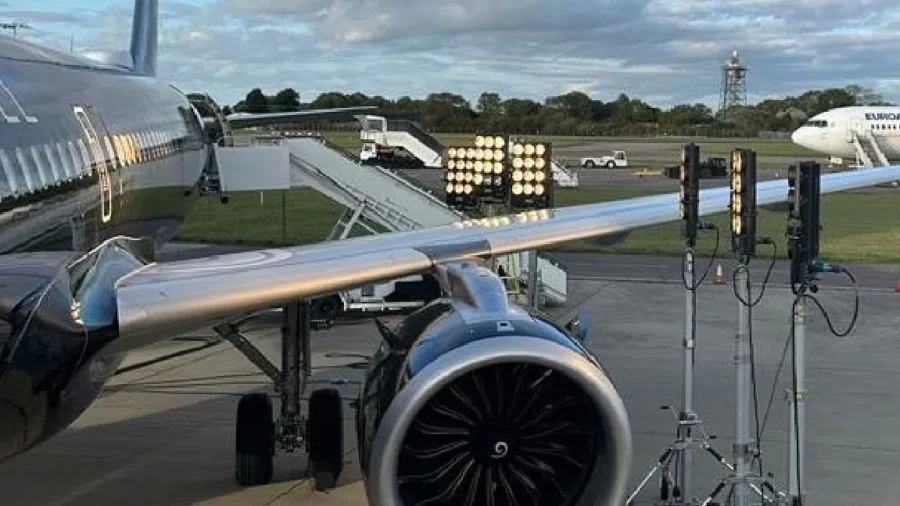A plane traveling from London to Orlando on Oct. 6 was forced to turn around after crew members noticed damaged windows on their unusually noisy and cold flight, a U.K. government agency report said.
The chartered Airbus A321 took off from London Stansted Airport with 11 crew and only nine passengers on board. An Airbus A321 typically accommodates 180 to 230 passengers.
When the aircraft reached 14,000 feet, it was forced to make an emergency turn and land back in London after passengers found the cabin much “noisier and colder” than usual—the plane was missing two window panes.
A crew member described the noise as “loud enough to damage your hearing,” said the Air Accidents Investigation Branch report.
The report said his “attention was drawn to a cabin window on the left side of the aircraft” where a “window seal was flapping in the airflow, and the window pane appeared to have slipped down.”
He alerted other members of the crew, and after the engineer and the third pilot had taken a look, it was decided to return to London.
The crew told the passengers to remain seated and keep their seatbelts fastened and reminded them about the use of oxygen masks if that became necessary.
Once the plane landed, it was discovered that two cabin windowpanes were missing, and the inner pane and seal from a third window were “displaced but partially retained in the airframe.” A fourth window protruded outwards from the plane more than was usual.
The four affected windows were adjacent to each other, just over the plane’s left wing.
Air compressors were able to compensate for the air leaks to keep the cabin pressurized normally throughout the flight, the report confirmed.
The plane had been in the air for 36 minutes before turning around.
After the aircraft landed, a shattered outer pane was recovered from the taxiway during a routine runway inspection.
Removal of the cabin lining inside the passenger cabin revealed that the window retainers were in good condition and correctly installed—ruling out a maintenance or engineering error.
Filming Lights Blamed
The defect was revealed to have an unusual reason: the day before the incident, the aircraft had been used for filming at the airport.
For four or five hours, 12,000-watt floodlights shone through the cabin windows to give the illusion of a sunrise. The heat of the lights had caused parts of the foam that hold the layers of the window pane together to melt and even slightly warp the window panes themselves.
Once the aircraft was in the air, pressure differences dislodged the panes, either partially or wholly.
The report said it is likely that the floodlights were positioned closer than their recommended distance.
“A different level of damage by the same means might have resulted in more serious consequences, especially if window integrity was lost at higher differential pressure,” the report concluded.


